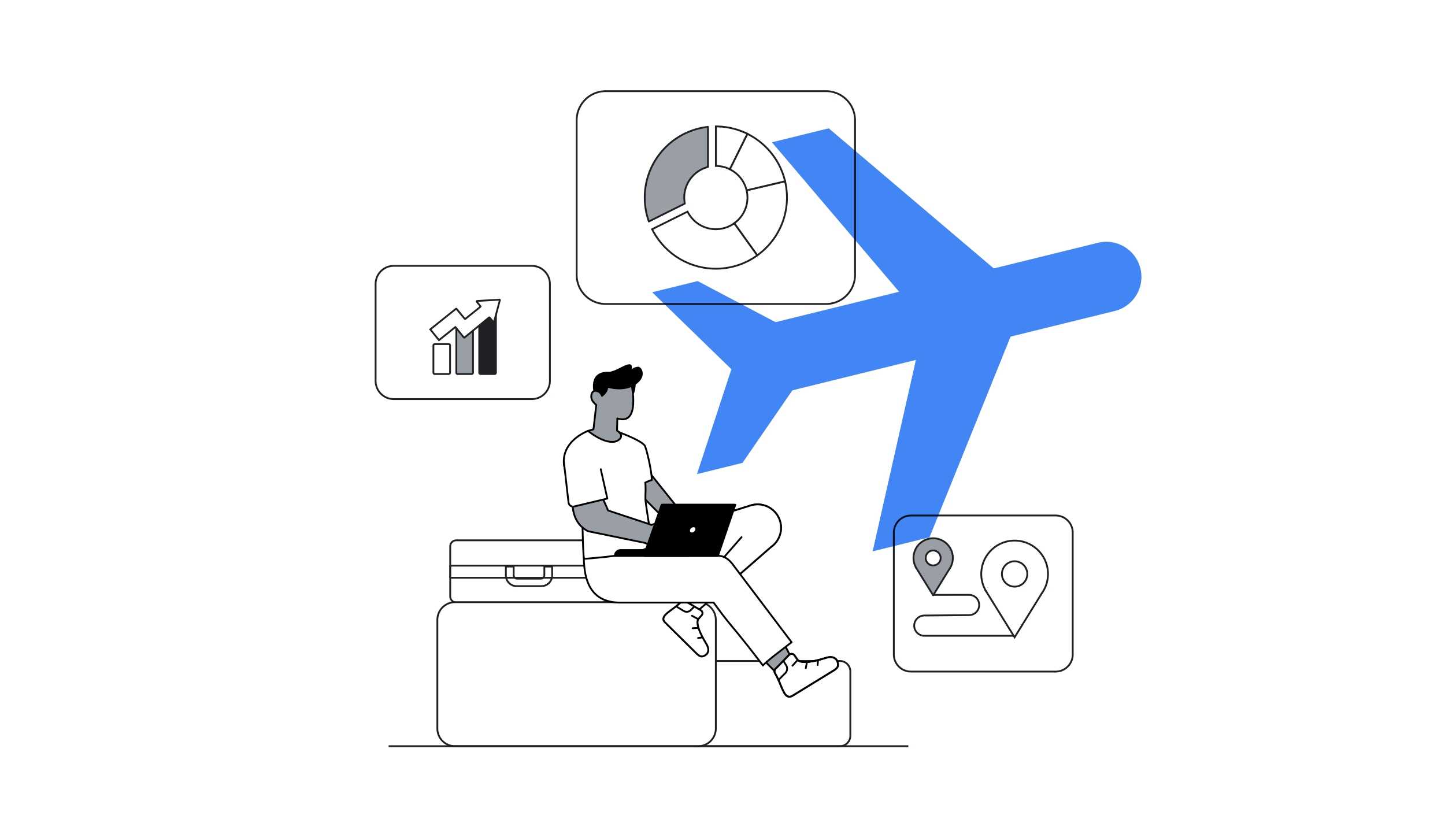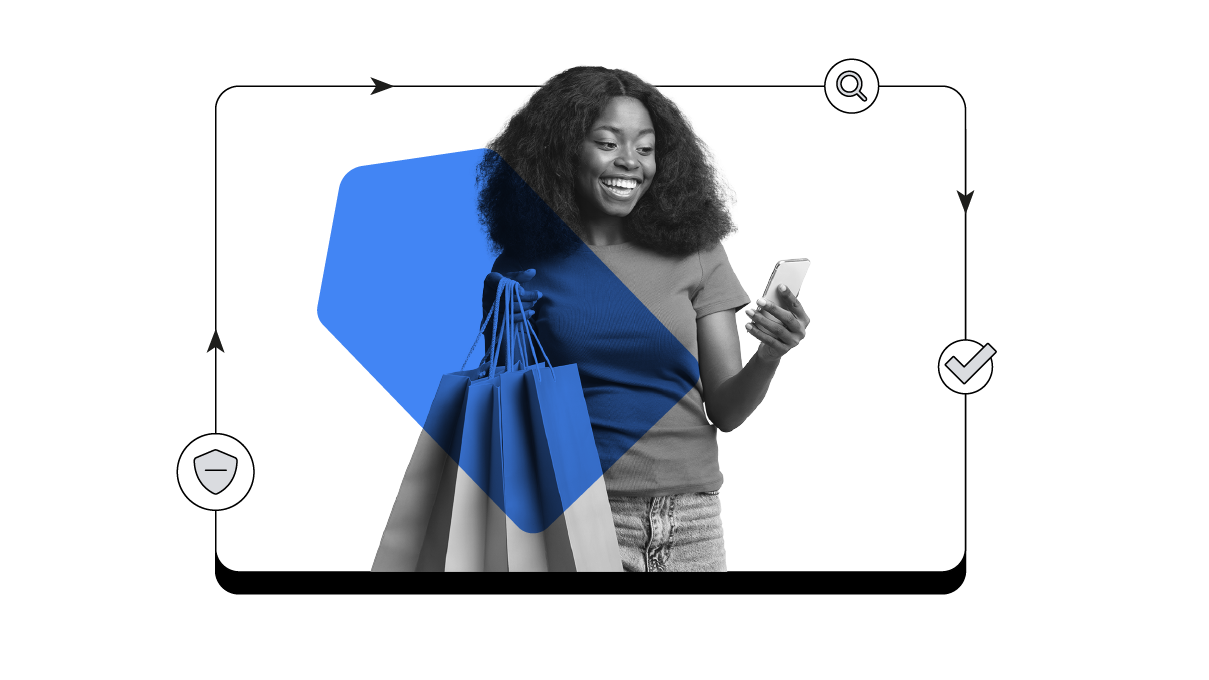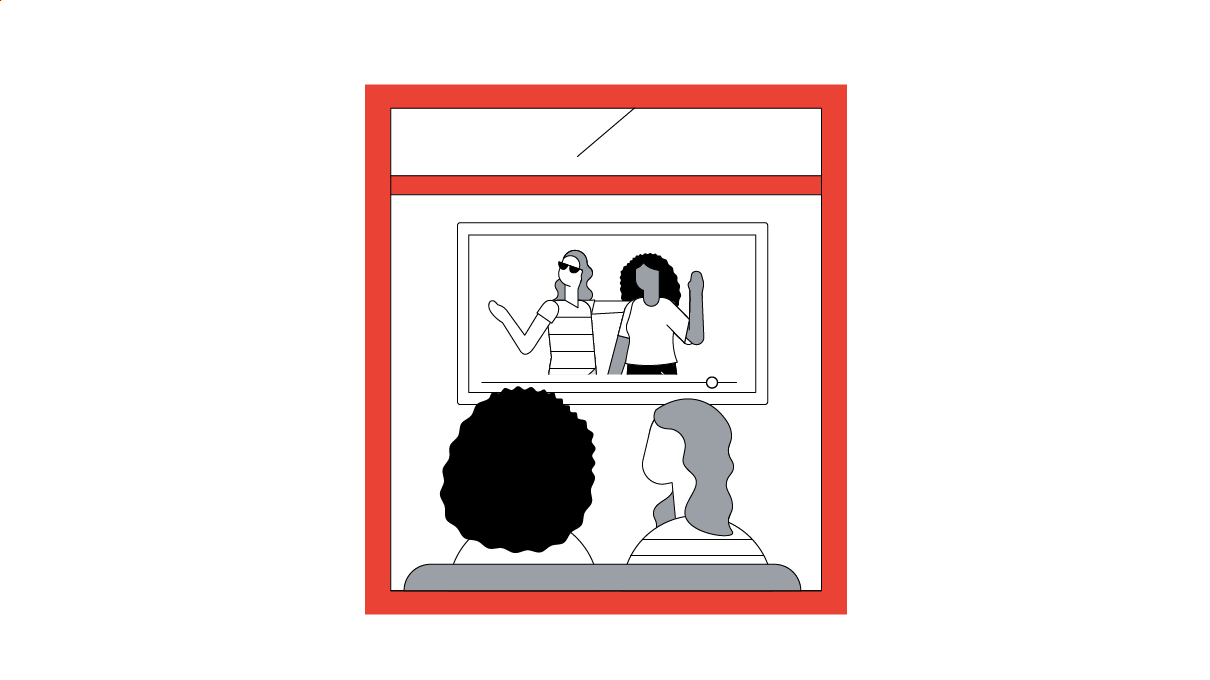Half the fun in travelling is dreaming up the destination. Part two of this six-part series on travel moments dives into I-want-to-get-away moments—the dreaming moments before a trip is planned—and how travel marketers can capitalise on these early moments of inspiration.
You know the feeling. Maybe you’ve just gotten back from your most recent trip. Or maybe you can’t remember the last time you even took a trip. Regardless of when it strikes you, you can probably relate to the vacation itch.
In these I-want-to-get-away moments, people are at the early stages of thinking about their next trip. They’re exploring destination options and dreaming about what their next getaway could look like.
Most consumers aren't brand-committed in these moments. For example, 83% of leisure travellers haven’t decided what airline they will travel with, and 84% haven’t chosen the accommodation provider they will book with when they first start thinking about a trip.1
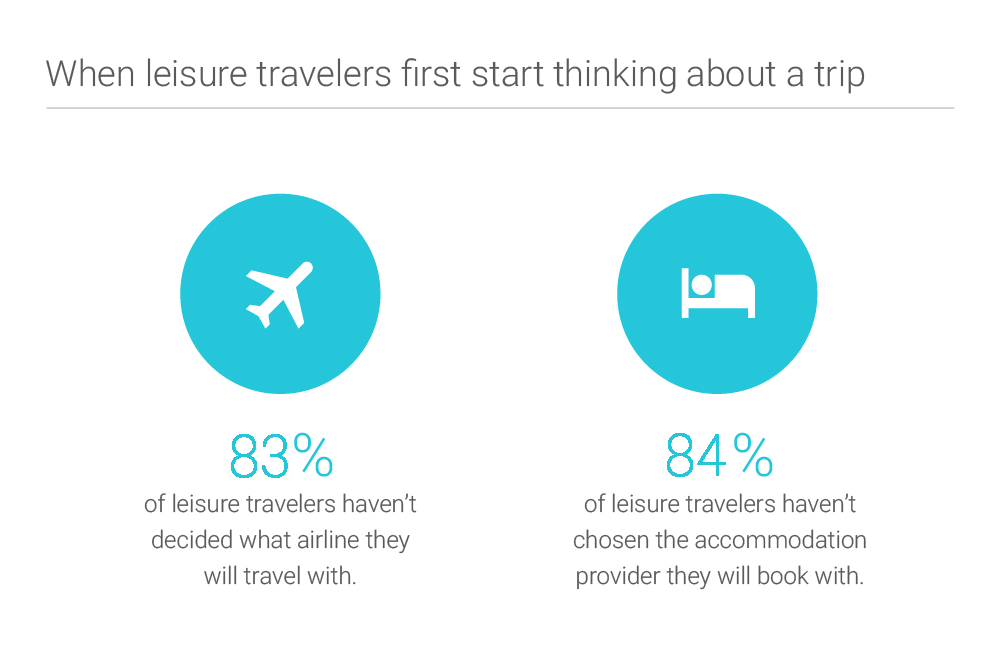
Not only have travellers not decided on what brand they’ll book with, but they don’t necessarily have a destination picked out either. Since many travellers still have an open mind about where they’ll go and who they’ll book with, these are prime opportunities for travel brands to make an impression.
Snapshot of a real traveller’s decision-making journey
Online interactions are increasingly shaping how people dream up their next trip. New clickstream data from Luth Research’s opt-in panel (illustrating the pages a user visited, and in which order) provides a snapshot of what a real traveller’s I-want-to-get-away moments actually looked like. By analysing this traveller’s searches, clicks, website visits, and video views while he was in dreaming mode for his upcoming travel plans, we can start to see exactly how and how much digital played a role in influencing his destinations.
Meet Liam. Liam is 30 years old, and he’s not just planning one trip, but three: a vacation to Miami, a trip for his friends’ wedding in the Northeast U.S., and his own destination wedding in the Dominican Republic. He's also open to planning even more travel, should he be inspired during his research.
Take a look at Liam’s travel moments over the course of four months:
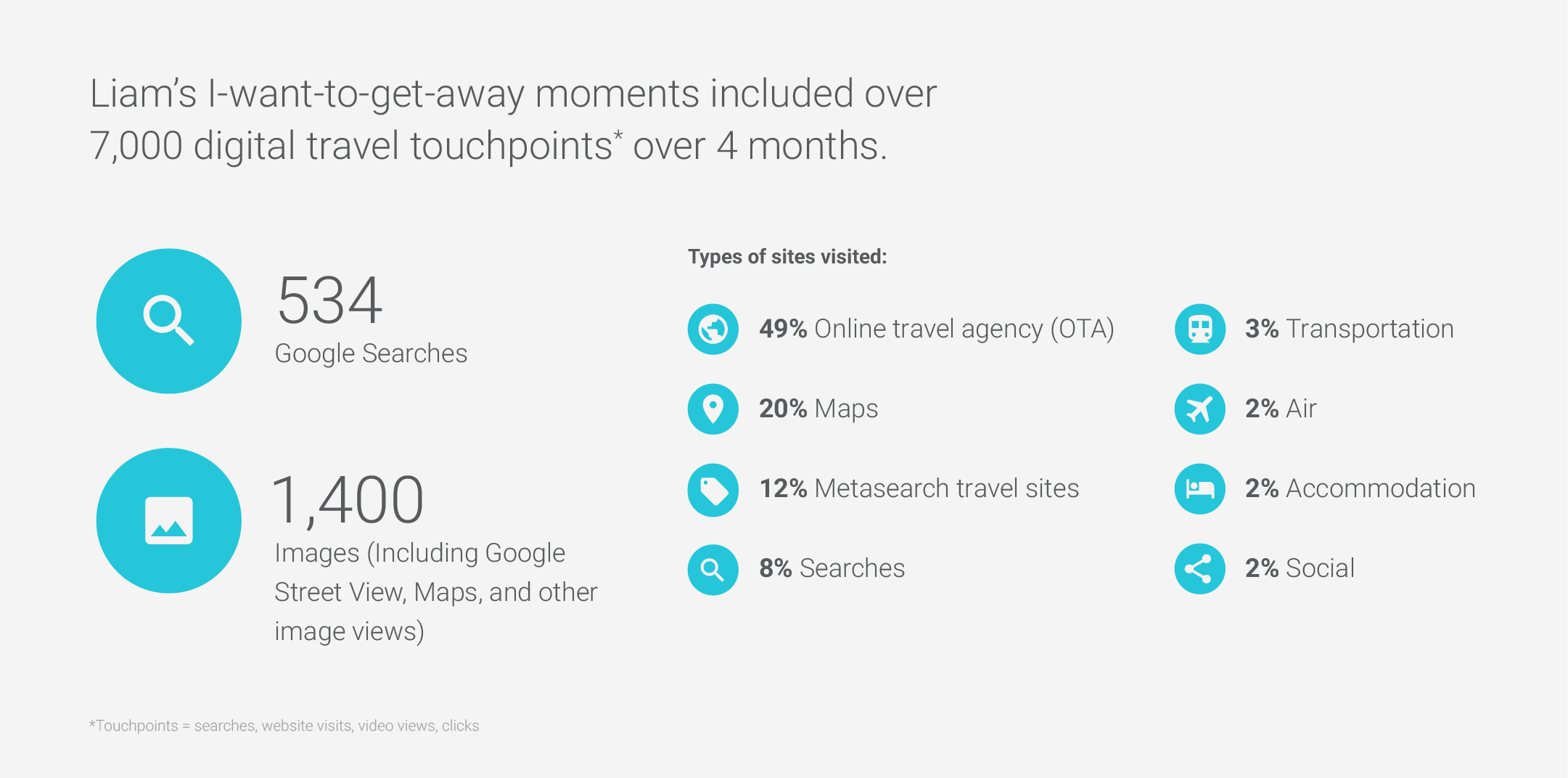
And here’s a real sample of one of Liam’s research paths in an I-want-to-get-away moment that started with a search:
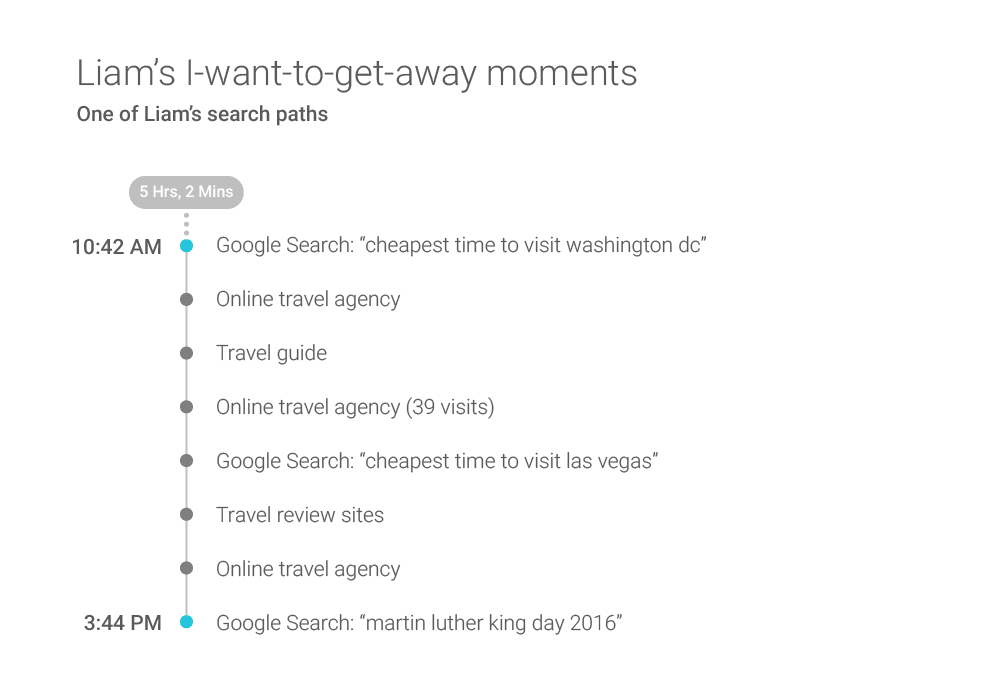
How to win I-want-to-get-away moments: Be there and be useful
At this early stage in the travel decision-making process, people want brands to provide content to inspire and to help narrow down choices. What’s in it for hotel marketers, airline marketers, and other travel marketers? Here are some concrete tips for providing people with relevant and useful content in their I-want-to-get-away moments:
Ensure you’re showing up for the searches people are doing in these moments—even on mobile. If you want to be in the consideration set, you have to be present in the I-want-to-get-away moments. And remember that the smallest screen increasingly helps plan the biggest of purchases, travel included.
Food for thought as you consider your “be there” search strategy: People often search for inspiration for vacation destinations based on geography or on a type of trip someone has in mind. “Honeymoon destinations” and “europe destinations” are common searches we see like this on Google. While these searches happen on all screens, 60% of searches for destination information come from mobile devices.2 "Best time to visit [destination]” searches are common as well, and increasingly so on mobile. As of March 2016, searches like this have increased 60% year over year on smartphones.3
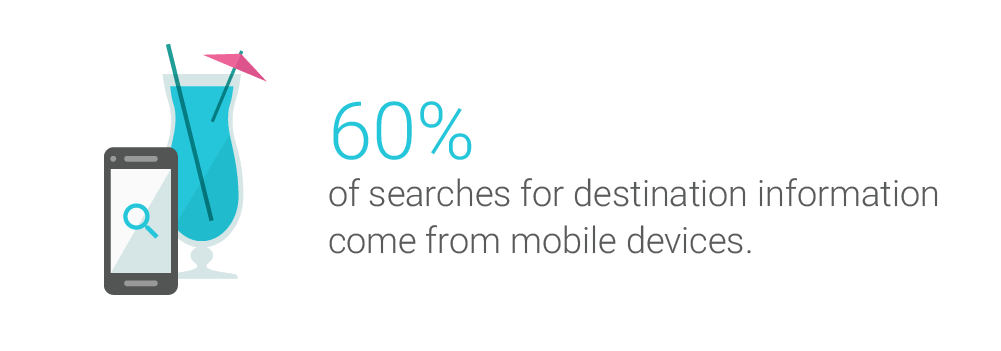
Provide visual content for people’s I-want-to-get-away moments, especially on mobile. When it makes sense, highlight what the experience will be like when they arrive, including what is available to see and to do while on the trip.
Travellers use Destinations on Google tto learn about different destinations, explore points of interest, and get a snapshot of what a week-long trip might cost. From this behavior, we are able to glean insights into what is most useful for people as they decide where to go using mobile. On the Travel Guide tab, one of the most engaged-with elements on the page is the main photo for that destination. This makes sense, as 24% of leisure travellers said that they saw pictures of a destination on social media before when choosing where to go.4
The most popular type of travel videos watched on YouTube are travel vlogs.5
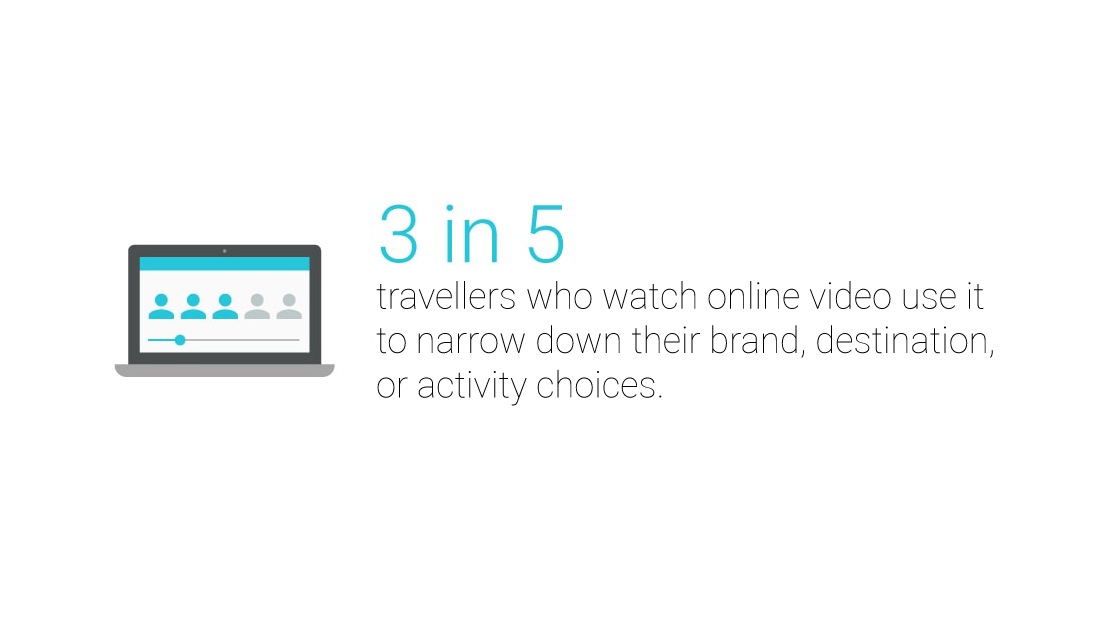
Even though travel vlogs are the most viewed and most engaging type of travel videos, only 14% of vlogs on YouTube are created by brands; 86% come from YouTube creators.5 This is a good opportunity for brands: Make sure you're creating content that speaks to the needs of your audience in engaging formats.
How hospitality and airline marketers are meeting consumer needs
Marriott Hotels is a great example of a brand meeting travellers in their I-want-to-get-away moments. Marriott Hotels realised that next-generation travellers know that brands need to market to them, but they also appreciate entertaining and inspiring content offered in an authentic way. To build out content for travellers’ I-want-to-get-away moments, the executive team appointed a VP of content creation, built its own in-house content creation studio, and created Marriott traveller, an online travel magasine and content hub.
Now Marriott creates vlogs and a wide variety of other online content. The brand focuses on documentary-style videos and has partnered with YouTube creators like Taryn Southern, Casey Neistat, and Sonia Gil to cover cities around the world.
Marriott is also investing in longer-form content. Its 19-minute adventure Two Bellmen Two, set in Dubai, accumulated over seven million YouTube views in its first two months of release. To pick the destinations for these short films, Marriott identifies top searched-for destinations, using Google Search data and Marriott's own data, with the least amount of video content available.
Marriott is also investing in longer-form content. Its 19-minute adventure Two Bellmen Two, set in Dubai, accumulated over seven million YouTube views in its first two months of release. To pick the destinations for these short films, Marriott identifies top searched-for destinations, using Google Search data and Marriott’s own data, with the least amount of video content available.
Virgin America has taken a different approach to meeting customer needs in I-want-to-get-away moments.
Virgin America knows that its onboard amenities, comfortable seats, and hip mood-lighted vibe help set it apart in the airline industry. The brand wanted a way for guests who were unfamiliar with the product to experience it firsthand so they could realise what they were missing. The solution: an interactive brand campaign that allowed travellers to "test-drive" a flight before it took off.
Virgin America initially used Google Street View, and then Google Cardboard (a simple-to-use virtual reality tool) to give potential customers a 360-degree interactive tour of its Airbus A320 cabin. This interactive tour was able to communicate the unique benefits of traveling with Virgin. Views of the ample legroom and in-seat entertainment offer transparency to people in I-want-to-get-away moments as they think about where to go and who to go with. This new experience has generated over 600,000 interactions and a 15% overall lift in unique site visitors compared to the year prior.
Read on for the next article in this series.

